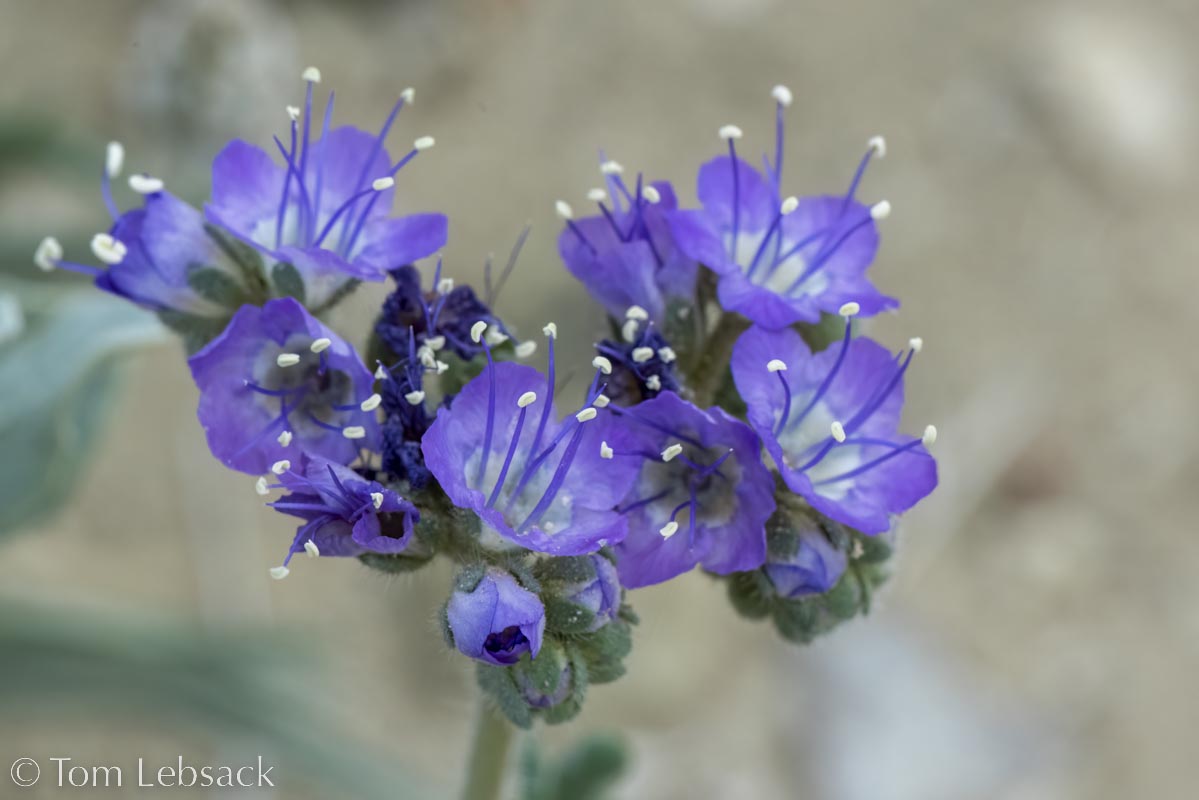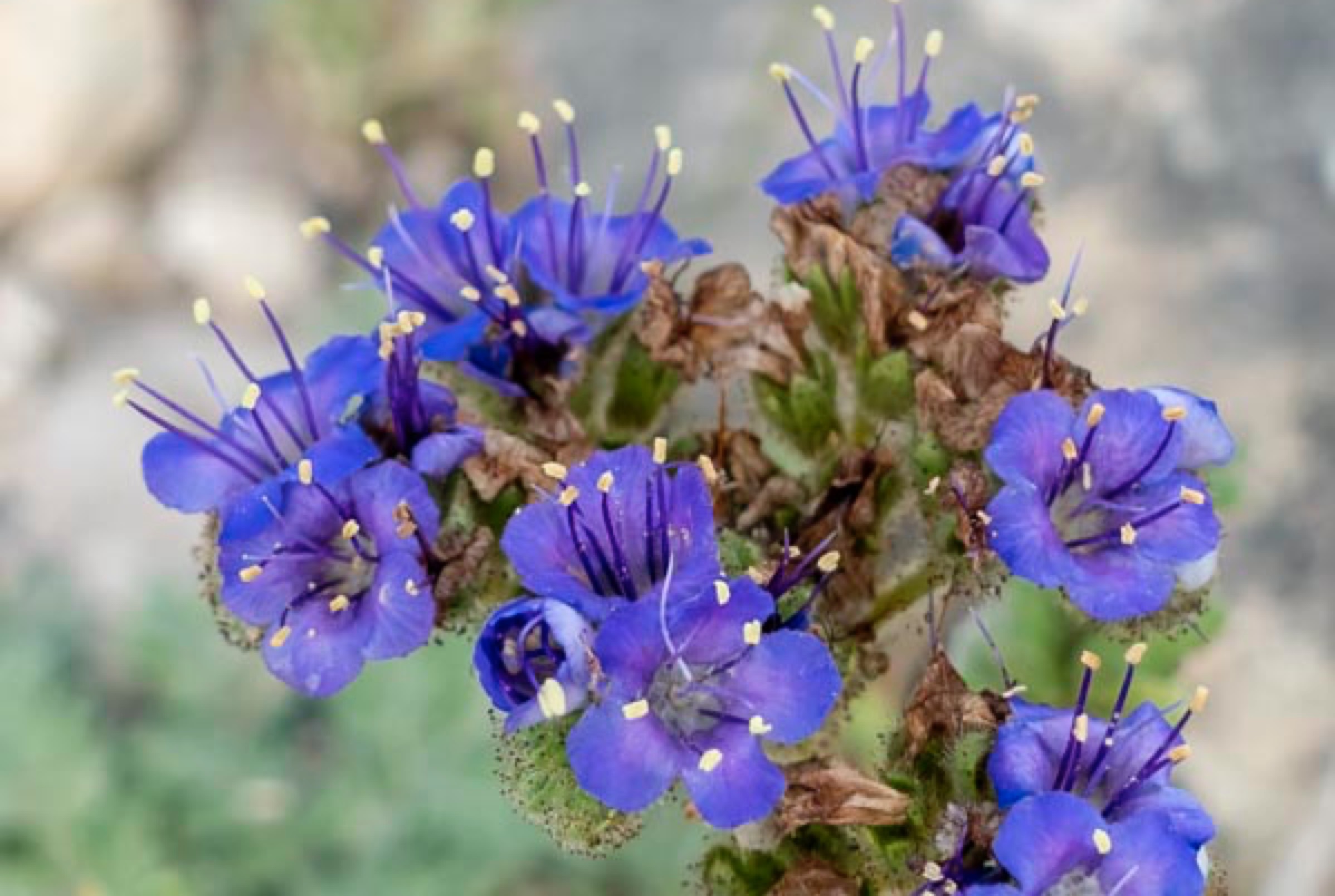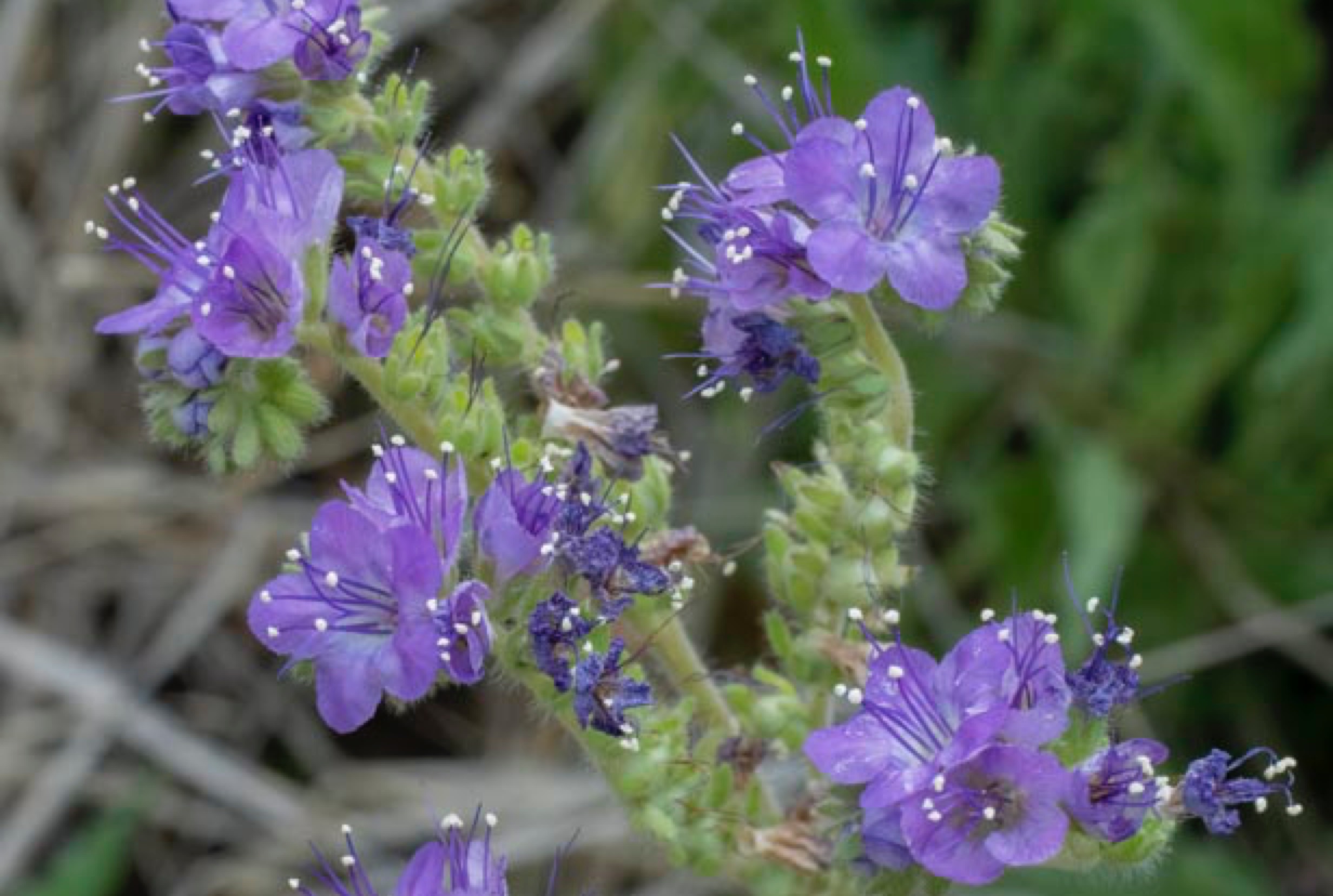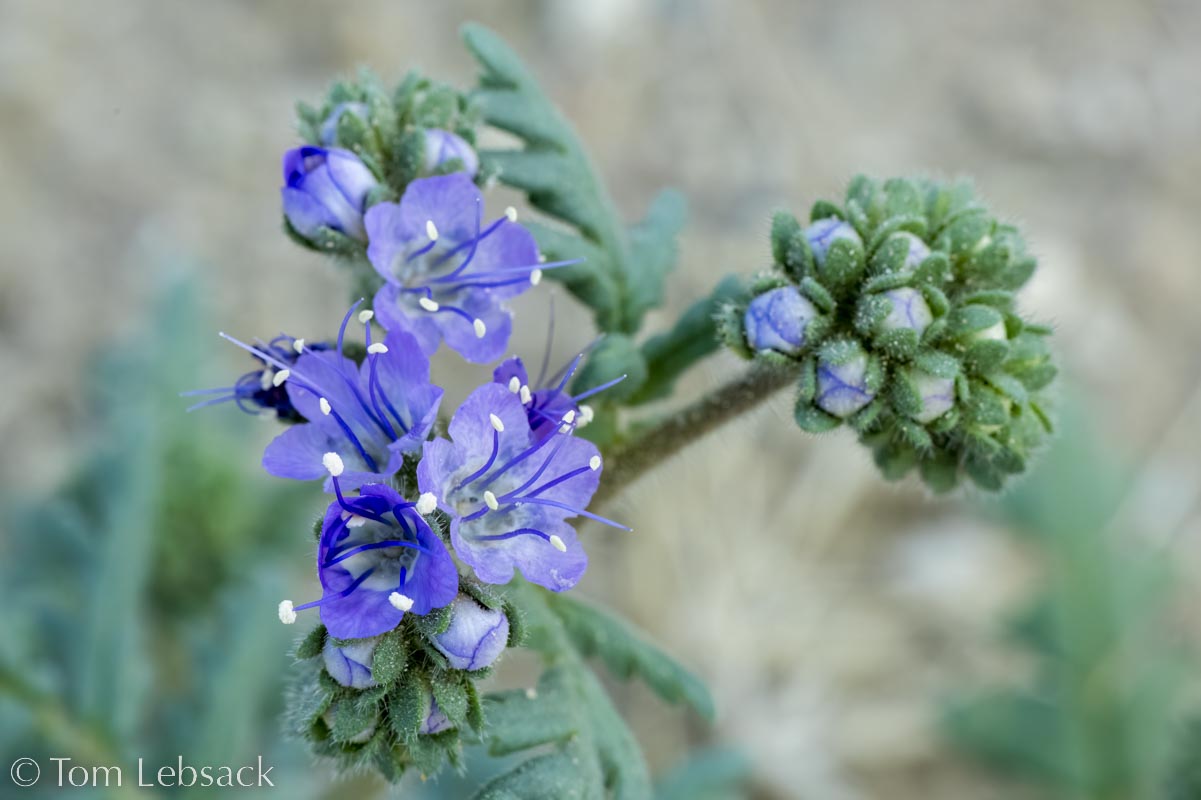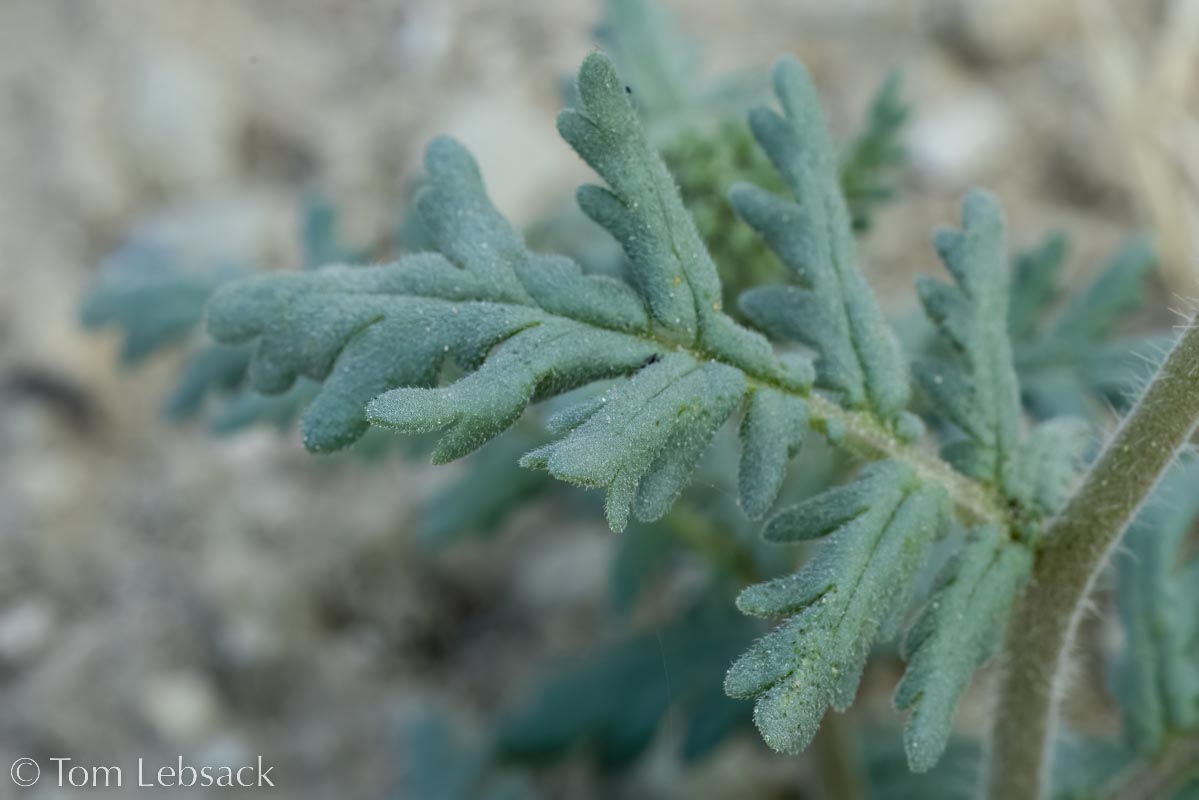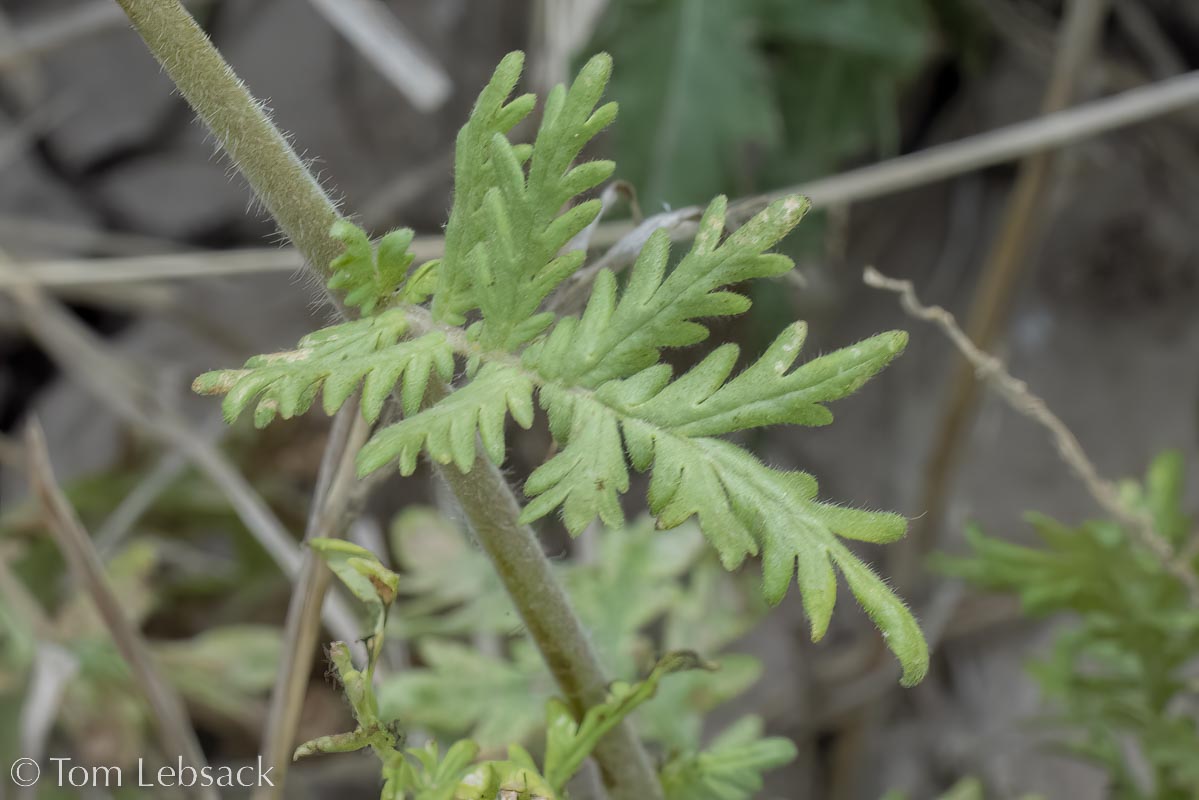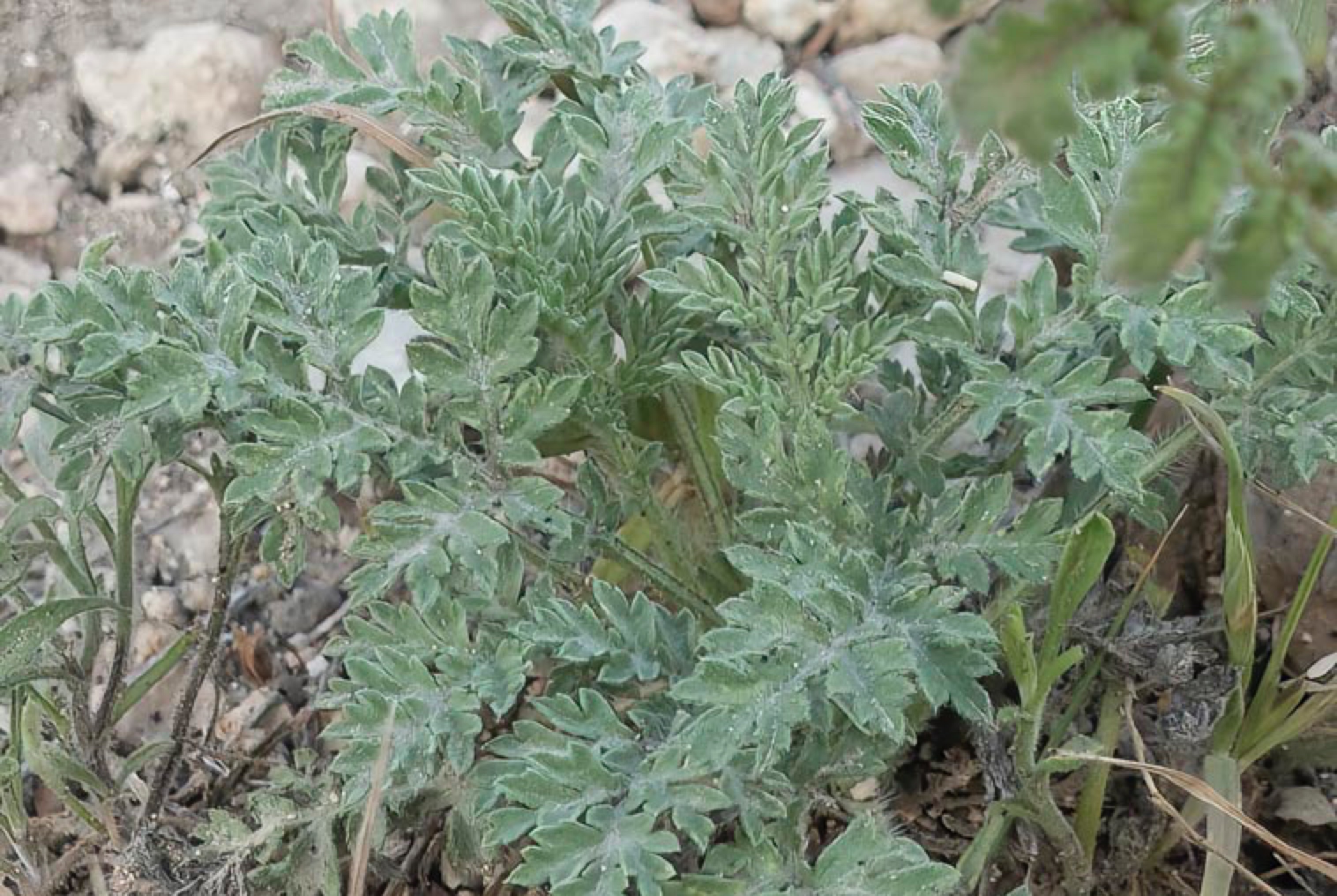Texas Wildbuds
Phacelia popei
(Pope’s Scorpionweed)
| Scientific Name | Phacelia popei | USDA PLANTS Symbol | PHPO |
| Common Name | Pope's Scorpionweed, Pope's Phacelia | ITIS Taxonomic Serial No. | 31576 |
| Family | Hydrophyllaceae (Waterleaf) | SEINet Reference |
Click Here |
| Description | Habitat: Sandy or rocky soils, sometimes in limestone or gypsum environments; open areas and roadsides. Plant: Erect annual 2 to 14 inches tall; branching stems from base, hairy, somewhat glandular. Leaves: Alternate, narrowly oblong in outline, 3/4 to 3 inches long; pinnate to bipinnate-divided, linear or lanceolate divisions; surfaces strigose to glandular hairs. Inflorescence: Small bell-shaped blossoms crowded together in terminal coiled (scorpioid) clusters; each blossom about 1/4-inch long with 5 overlapping blue to purplish lobes; stamens extending past the corolla, style slightly longer than stamens; 5 oblanceolate to spatulate sepals shorter than petals with gland-tipped and non-glandular thick, stiff hairs (hirsute). Bloom Period: April and May. References: "Wildflowers of Texas" by Michael Eason, "Manual of the Vascular Plants of Texas" by Correll and Johnston and A Revision of the Phacelia Crenulatae group for North America by N. Duane Atwood. Note: Experts seem to agree that Phacelia species are difficult to differentiate. Foliage is usually not determinant, blossoms and seed being more reliable. These IDs should be considered in that light. |
BONAP Distribution Map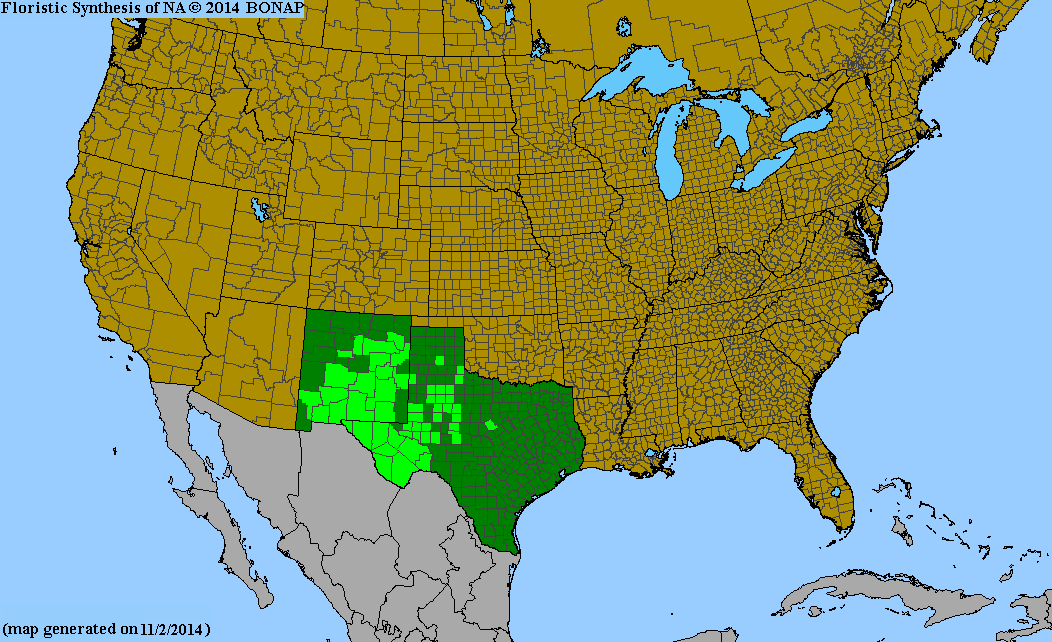 Map Color Key Map Color Key |
Texas Status: Native |
Banner photo of Castilleja indivisa and Lupinus ssp. taken along FM 1323 north of Johnson City, Blanco County
© Tom Lebsack 2025
Every attempt is made to provide accurate, up-to-date, and relevant information, but the completeness or accuracy of any information presented on this website cannot be guaranteed. I use authoritative references to insure high standards of accuracy and review and update the information frequently.
